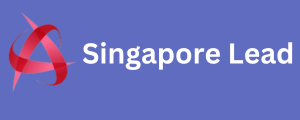Data segmentation significantly impacts telemarketing effectiveness by transforming a generic, “spray and pray” approach into a highly targeted and personalized strategy. Instead of making uniform calls to a broad audience, segmentation allows telemarketers to focus their efforts on specific groups of prospects with shared characteristics, needs, or behaviors, leading to numerous benefits.
1. Increased Relevance and Personalization Telemarketing Effectiveness
The most direct impact of data segmentation is buy telemarketing data the ability to deliver highly relevant and personalized messages.
Tailored Pitches: Instead of a one-size-fits-all script, agents can use scripts designed for a specific segment. For example, a B2B telemarketer calling a small business owner will use a different approach than one calling a corporate executive in a large enterprise.
Addressing Specific Needs: Segmentation allows telemarketers to identify the pain points and challenges unique to a particular segment. This enables them to present solutions that directly address those issues, making the conversation more impactful and valuable to the prospect.
Improved Connection: Personalization fosters a sense of being understood and valued. When a prospect feels the call is genuinely relevant to them, they are more likely to engage, listen, and respond positively, building rapport and trust.
2. Higher Conversion Rates
By increasing relevance and personalization, data shop floor control: manufacturing database essentials segmentation directly leads to improved conversion rates. When the right message reaches the right person at the right time, the likelihood of a successful outcome (e.g., a sale, an appointment, a qualified lead) increases significantly.
Focus on Qualified Leads: Segmentation helps identify the most promising leads—those most likely to convert. This allows telemarketing teams to prioritize their efforts, focusing on individuals who fit the ideal customer profile and have demonstrated a higher propensity to buy.
Reduced Friction: A personalized approach reduces the immediate “hang-up” factor. Prospects are less likely to perceive the call as a nuisance if it immediately demonstrates an understanding of their needs or interests.
>Optimized Resource Allocation: Instead of wasting time and resources on unqualified leads, agents can concentrate on segments with higher conversion potential, leading to a more efficient use of telemarketing resources.
3. Enhanced Agent Efficiency and Morale
Data segmentation doesn’t just benefit the whatsapp filter customer; it also significantly impacts the telemarketing agents themselves.
Clearer Targeting: Agents receive segmented lists, making it easier for them to understand who they are calling and why.
Improved Success Rates: Higher conversion rates naturally boost agent morale. Success breeds confidence, leading to more motivated and productive telemarketing teams. Conversely, constantly facing rejection from unqualified leads can lead to burnout.
4. Better Campaign Measurement and Optimization Telemarketing Effectiveness
Segmentation provides a structured framework for analyzing campaign performance and making data-driven improvements.
Continuous Improvement: Insights gained from segment-specific analytics enable iterative refinement of telemarketing strategies. If a particular segment isn’t responding well, the approach for that segment can be adjusted without impacting other, more successful segments.
5. Stronger Customer Relationships and Lifetime Value
Beyond immediate sales, data segmentation contributes to building stronger, long-term customer relationships.
